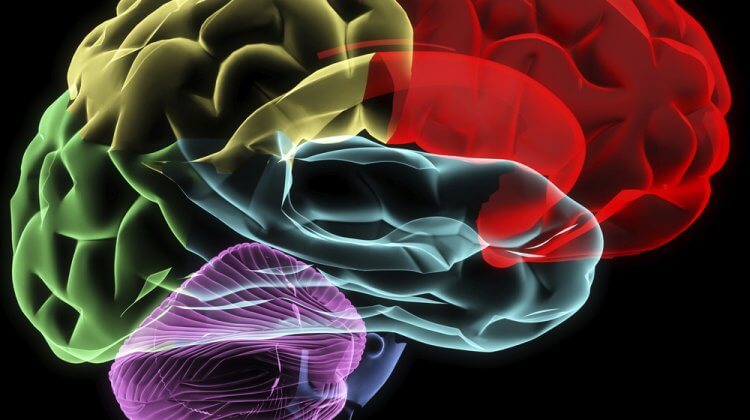
6. Anabolic Steroids, Athletes and Behaviour
Very few scientific studies are available of either the personality and psychological characteristics or the changes that might be incurred as a result of heavy resistance training in competitive weightlifters and bodybuilders (Harlow 1951; Henry 1941; Thune 1949). Further, there is little understanding of the extent to which resistance (or other) training may develop and/or facilitate the expression of aggression. In a study of 10 competitive female bodybuilders, Freedson et al. (1983) found this group of athletes to be somewhat less anxious, neurotic, depressed, angry, fatigued, and confused and more extraverted, vigorous and self-motivated [State-Trait Anxiety Inventory, Profile of Mood States, Self-Motivation Inventory (Dishman et al. 1980), and Eysenck Personality Questionnaire] than the general population indicating ‘good mental health’. Unfortunately, no mention is made by Freedson et al. (1983) as to whether their subjects were anabolic-androgenic steroid users.
Psychological and behavioural changes, such as increased aggressiveness and irritability, have been reported on an anecdotal basis by athlete anabolic-androgenic steroid users as well as their families and friends (Goldman et al. 1984; Taylor 1982, 1987a,b; Wright 1978, 1982). It is possible, however, that, as occurs with so many drugs, many of the subjectively-perceived psychological and behavioural changes reported by anabolic-androgenic steroid users are a direct result of expectancy, imitation or role modeling. Observing the actions of other anabolic-androgenic steroid users and athletes may greatly influence the expectations and behaviours of those in the initial and early continuation phases of use. In addition, aggressive or even violent behaviour that may be unacceptable outside the athletic environment may not only be fully acceptable but actually encouraged and even required within the within the weight room or on the playing field.
Brooks (1980), Wilson and Griffin (1980), and Ryan (1981) have suggested that some if not most of the ergogenic benefits of anabolic-androgenic steroids may derive from their psychological effects. It is possible that anabolic-androgenic steroid use may elevate arousal (Rejeski et al. (1988b), increase self-confidence and pain threshold (Holzbauer 1976), and facilitate expression of the ‘all-out’ physical effort demanded during training and competition in a variety of sports. In the absence of adequate external forces, internal discipline, or social coping skills, these phenomena could lead to expression of aggression at inappropriate times. In this regard it is interesting to note that many times the behaviour associated with criminal actions is frequently ‘not intended to hurt anyone’.
Rozenek (1985) examined the effects of an acute bout of resistance exercise and self-administered anabolic-androgenic steroids on various physiological parameters and mood states. In addition, resistance training (62.5% of 1 repetition maximum strength capacity in various exercises) was compared to endurance activity of similar intensity (62.5% of VO2max) and duration (47 minutes). 23 subjects were divided into 4 groups: 8 nonuser weightlifters; 5 weightlifters self-administering anabolic-androgenic steroids; 5 runners; and 5 sedentary controls. The POMS questionnaire was administered prior to, immediately following, and 30 minutes after a bout of exercise. Significant differences in mood were observed among groups. Both groups of weightlifters, including those self-administering anabolic-androgenic steroids, had higher scores in confusion-bewilderment, fatigue-inertia, and total mood disturbance than both groups of runners and controls. In addition, the anabolic-androgenic steroid-using weightlifter group had a significantly higher anger-hostility score immediately following exercise than any of the other 3 groups. Rozenek (1985) concluded that dynamic resistance exercise resulted in different psychological responses from endurance exercise of similar relative intensity and duration and that anabolic-androgenic steroids may alter the response normally seen during exercise and recovery.
Hevery et al. (1976) reported that one benefit of taking anabolic-androgenic steroids, as expressed by some athletes, lay in the reduction of fatigue during the training season, which allows for more training to be done. Freed et al. (1975) provide anecdotal and self-report information that athletes using anabolic-androgenic steroids are generally less easily fatigued, allowing for longer, more frequent and/or intense training sessions. This could be related to the fact that anabolic-androgenic steroids can block and reverse the anticatabolic effects of glucocorticosteroids that are released during periods of stress including physical exertion (Kochakian 1976; Kruskemper 1968; Williams 1981). Work with rats has also demonstrated reduced alkaline protease activity (Dahlmann et al. 1981) and increased glycogen supercompensation (Gillepsie & Edgerton 1970) in androgen-related animals. Brooks (1980) has suggested that the increases in aggression and energy that the athletes feels may be the result of neurological changes previously discussed. In cases where anabolic-androgenic steroids do improve physical or physiological capacities or performance, the improvement is likely due to some extent to increases in training per se as well as to any pharmacological effect. Despite these suggestions and self-reports, scientific data supporting the notion that psychological changes (enhanced arousal, confidence, aggression, motivation) play a primary role in mediating any ergogenic effects of anabolic-androgenic steroids is lacking.
Strauss et al. (1983) in a study of the side effects of anabolic-androgenic steroids (375 +/_ 57 mg/week) in 32 weight-trained men found that 56% reported a temporary increase in self-defined irritability and aggressive behaviour during anabolic-androgenic steroid use which consisted of increased arguments or irritability when dealing with others. Some respondents also reported an increased tendency to engage in physical fighting. Strauss et al. (1985) also found that 8 of 10 female athletes using anabolic-androgenic steroids in a later study reported increased, albeit self-defined aggressiveness, which pleased 6 of these athletes, because it enhanced their drive to train and compete. However, some reported that their aggressiveness caused problems in relating to associates and family members.
Haupt and Rovere (1984) have reviewed 13 studies reporting subjective side effects during the administration of anabolic-androgenic steroids and found over 30% of the subjects questioned reported transitory side effects such as changes in libido (increased and decreased) and increased aggressiveness.
Annitto and Layman (1980) have described a single case which relates the use of an anabolic-androgenic steroid (purportedly methandienone, dose not provided) obtained on the black market to the development of an acute schizophrenia illness in a 17-year-old male who took up bodybuilding to compensate for being picked on by other children due to his frail nature. Symptomatology began approximately 6 months after initiating anabolic-androgenic steroid use and subsided with discontinuance. However, as Annitto and Layman state, they were unable to ‘…definitely demonstrate that the use of this medication was etiopathogenic in this young man’s illness…’ Freinhar and Alvarez (1985) have reported on a case of anabolic-androgenic steroid-induced hypomania in a probably cyclothymic personality. The patient, a 27-year-old male bodybuilder with no previous major psychiatric dysfunctions or psychoses, but a tendency toward periodic depressions without vegetative symptoms alternating with hyperactivity and increased libido, began self-administering a synthetic androgen (oxandrolone, source unknown, at a reported dose of 6mg orally twice daily). (Since oxandrolone is typically available only in 2.5mg tablets, the reported dose itself raises questions about the accuracy of the drug or dose taken.) Nevertheless, within 6 days the patient began to feel irritable, somewhat hyperactive, noted a decrease in sleep, and an overall increase in energy level. Within a week, he began to ‘feel good all the time’, described ‘thoughts running around in my head’, experienced hyperphagia and hypersexuality. A tentative diagnosis of steroid-induced hypomania was formulated. When androgen consumption was terminated, all symptoms disappeared within 3 to 4 days. However, a week later the patient resumed self-administration of anabolic-androgenic steroids (oxymetholone, dose and source unknown/unreported) and again presented with similar symptoms. Despite being informed of the possible long term consequences of using this drug, the patient decided to continue his self-prescribed regimen and did not return for further treatment.
Pope and Katz (1987) studied 2 men who required hospital admission for psychotic episodes apparently associated with the use of anabolic-androgenic steroids (methyltestosterone 20 mg/day orally in a 40-year-old treated with anabolic-androgenic steroids for idiopathic impotence and methandrostenolone 15 mg/day orally in a 22-year-old bodybuilder). Neither individual reported any previous serious psychopathology and both, with no further exposure to anabolic-androgenic steroids, remained psychiatrically normal during more than 2 years of follow-up. Consequently, Pope and Katz concluded that anabolic-androgenic steroids were likely a causative factor in both cases.
Pope and Katz (1988) also interviewed 41 (39 male) additional anabolic-androgenic steroid users using a structured diagnostic interview. Self-reports of various psychiatric syndromes during anabolic-androgenic steroid use were compared with periods of no anabolic-androgenic steroid use. Results indicate that according to DSM-IIIR criteria (Spitzer et al. 1986), 5 subjects (12%) manifested psychotic symptoms, 4 others (10%) had ‘subthreshold’ or equivocal psychotic symptoms, 5 subjects (12%) reported a manic episode, and 9 (22%) developed a full affective syndrome during anabolic-androgenic steroid use. It is unclear whether these groups were mutually exclusive. None of the 41 subjects recalled adverse effects of anabolic-androgenic steroids sufficient to require medical consultation and apparently none sought treatment for their mental health disturbances. Although Pope and Katz do not elaborate on their recruitment of participants, other than to report that they were volunteers obtained by advertisements at 38 gymnasia in the Boston (26 gyms, 22 subjects) and Santa Monica (12 gyms, 19 subjects) areas and paid US$25 for a confidential interview, they do indicate that ‘…despite our considerable efforts at recruitment, only a minority of steroid users were willing to be interviewed.’ Unfortunately, their difficulty in obtaining subjects raises questions about the representativeness of their sample relative to the population of anabolic-androgenic steroid users. Given the vast pool of potential participants, their difficulty in obtaining volunteers could suggest a low incidence of psychiatric problems among anabolic-androgenic steroid users as well as a basic mistrust of the medical and scientific establishment. It is conceivable that those anabolic-androgenic steroid users who elected to participate in the study were individuals with the greatest severity and frequency of mental disturbance. It is also probably safe to assume that individuals willing to take anabolic-androgenic steroids and other drugs of questionable origin, content and purity, and with serious legal as well as health effects, differ from the population on a wide variety of characteristics including mental health. 15% of Pope and Katz’s subjects reported past alcohol abuse or dependence and 32% reported other prior substance abuse or dependence including cannabis (17%) and cocaine (12%). Interpretation of the reports of these subjects must be tempered by the absence of information regarding the extent to which their use occurred concurrently with anabolic-androgenic steroids and with psychiatric symptoms and by the absence of knowledge on the interaction of anabolic-androgenic steroids and such drugs of abuse. 17% had a first degree relative with a major affective disorder and 2 subjects reported symptoms of a full affective disorder when not taking steroids. Finally, while it is difficult to establish the extent to which anabolic-androgenic steroids may have contributed to the psychotic episodes reported by Pope and Katz, and while the media may have sensationalised their findings somewhat (Editorial 1988a,c), it seems likely that, with more widespread use of anabolic-androgenic steroids and increased efforts to document such reactions, additional cases will be forthcoming.
As part of an effort to assess physiological and psychological states accompanying anabolic-androgenic steroids usage, Wright et al. (1986) examined the psychological characteristics and subjectively-perceived behavioural and somatic changes accompanying steroid usage in 12 current anabolic-androgenic steroid users. The results obtained from these users were compared with results obtained from 14 previous users (no use more recent than 1 month) and 24 nonusers. Although both current and former users reported subjectively perceived changes in enthusiasm, aggression, irritability, insomnia, muscle size, and libido when using anabolic-androgenic steroids, these changes were not confirmed in comparison across groups using standardised psychological inventories (POMS and BDHI). The presence of subjectively perceived, anabolic-androgenic steroid-associated behavioural and somatic changes in the absence of significant differences in standard psychological inventory responses illustrates the complexity of these relationships and dictates a need for additional research. The findings of Wright et al. (1986) are both compatible with and complimentary to anecdotes, case reports and data from individual psychiatrists. The ‘negative’ findings do not negate the possibility of anabolic-androgenic steroids precipitating aberrant behaviour in some users. Our general impression, however, is that irritability is slightly increased in many users and that in a small number of users who are premorbid, anabolic-androgenic steroid use may well be sufficient to ‘push them over the edge’ and contribute to irrational or violent behaviour, particularly where the use of other drugs of abuse are involved (Bahrke et al. 1990). The results of the preceding studies are summarised in table IV.
Part 7: Psychological Dependence and Withdrawal Effects of Anabolic Steroids
Originally appearing in Sports Medicine 10(5) 303-337. 1990. Copyright © 1990 by Adis International Limited. All rights reserved. Reprinted by MESO-Rx with permission. Any duplication of this document by electronic or other means is strictly prohibited.
About the author
Warning: Undefined array key "display_name" in /home/thinksteroids/public_html/wp-content/plugins/molongui-authorship-pro/includes/hooks/author/box/data.php on line 11
Warning: Undefined array key "display_name" in /home/thinksteroids/public_html/wp-content/plugins/molongui-authorship-pro/includes/hooks/author/box/data.php on line 11
Warning: Undefined variable $show_related in /home/thinksteroids/public_html/wp-content/plugins/molongui-authorship/views/author-box/parts/html-tabs.php on line 30



Leave a Reply
You must be logged in to post a comment.